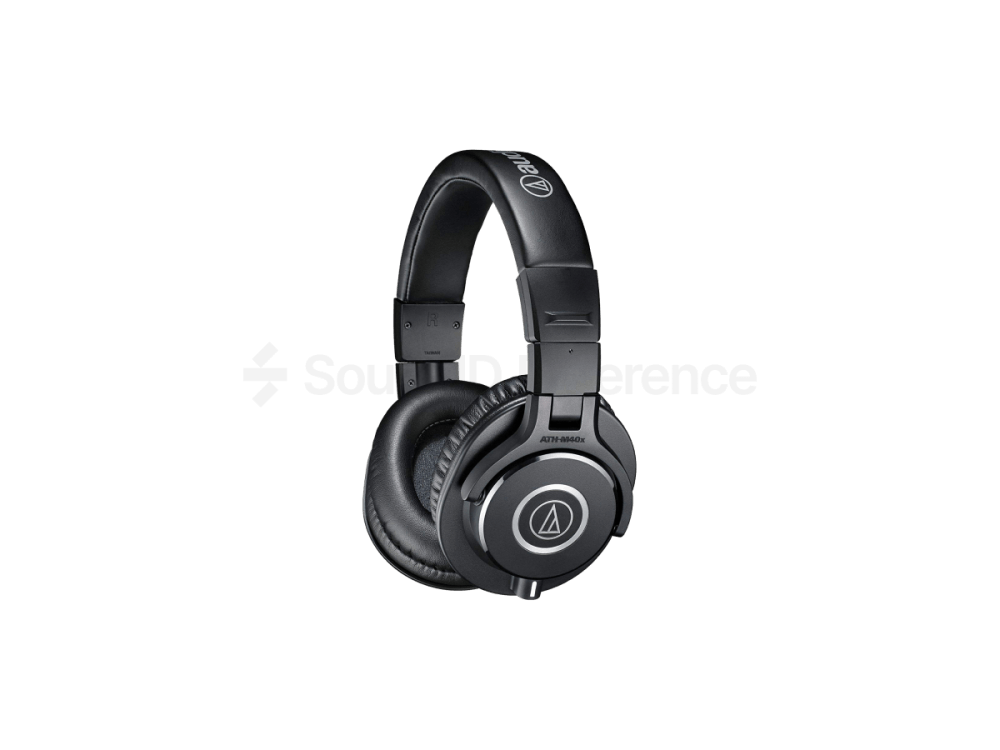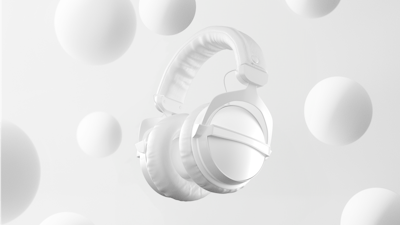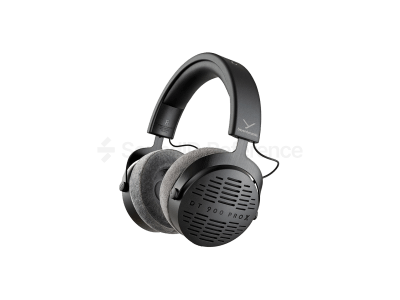Arguably the most popular headphone made by the Japanese Audio-Technica is the venerable ATH-M50x. It has long been the go-to recommendation for both listeners and sound creatives as well. This time we’re looking at its younger brother, the ATH-M40x to see whether it shares the same pedigree and does it hold some aces up its sleeve that the older M50x doesn’t.
- A feature-rich package
- Replaceable cable
- Not really tonally neutral
- High-ish THD with odd harmonics dominating the lows
- Comfort isn’t great
The M40x with its 35Ohm impedance and generous sensitivity can be easily driven from any headphone output out there. Even low-powered options like laptops, tablets and cell phones should be able to provide enough volume and headroom to work with high dynamics material. The low-ish 35Ohm impedance can be a nuisance when dealing with older devices that can have high output impedance which will shift the tonal balance of the headphone.
While the ATH-M40x looks rather similar to the M50x, the plastic used in its construction seems to be of lower quality. The headphone also uses hinged yokes to fold up neatly for transportation, which adds extra modes of failure. Ear pads are made out of artificial leather and are replaceable without much effort. The rest of the ear cup can be taken apart with a small screwdriver, should a driver fail and call for a replacement. A welcome feature is the replaceable cable which should add considerably to the ATH-M40x’s longevity.
Sometimes this tonal response is called the W-curve, so generally one can think of it as a U-curve with colored mids. Generally, the scoop between 100 and 1000 Hz isn’t very audible, as it’s gentle, but it will change the sound of just about every instrument or sample with mid-band content. The other scoop at upper mids is something that’s present in many headphones and again isn’t annoying, but takes away the crunch of distorted guitars and synth lines. The boosted treble will impart the sound with fake detail and will emphasize overtones on just about every instrument. Together with the 3kHz scoop, it will make getting snares to translate right a challenge.
Audio-Technica has done a really good job here! The channel matching on the ATH-M40x outdoes the ATH-M50x, as it doesn’t have an imbalance in lower mids and bass. The highs do show some discrepancies, but they’re hardly audible and won’t mess with the imaging in an audible way.
Comfort on the ATH-M40x isn’t stellar, the headphone clamps rather hard and the ear pads aren’t too soft either. The headband padding also seems too hard and will exert pressure on the top of your head. Overall they wear okay, but these shortcomings become a nuisance after a few hours. The pleather on the pads is also on the cheap side and will make your ears sweat.
As a package with two cables and a carrying pouch, the ATH-M40x is a decent offering for the price. It’s not a low-price closed-back class leader, but one can do a lot worse for the money. If you keep the frequency graph handy and remember the limitations of this headphone, it will help in crafting nice mixes.
The distortion profile shows 3 distinct problems – the small peak at upper mids, the mid peak and high odd-order distortion in the bass. All of these can’t be calibrated away and suggest that resonances can be present at these frequencies.
There’s little room for your ears to wiggle due to medium-sized ear pads, so consistency generally isn’t bad. The ATH-M40x also works well with average calibration profiles due to the absence of channel imbalance.
How much do they differ pair to pair in terms of frequency response?Overall not bad for an entry-level headphone, HyperX Cloud II is better at this.
Rating
Conclusion
Calibration sets the tonality to neutral, so mixing should be effortless with these and they can also be used for some tracking work. However, if you’re looking to buy these, be sure to also check out Beyerdynamic DT 240 Pro as well, since they offer more for a similar price.
For more information about Audio Technica headphones, please read our other reviews – ATH-M20x, ATH-M60x, and ATH-R70x.
To calibrate your existing M40x or any other pro studio headphones, purchase our headphone calibration software in our store.
Final Rating
Calibration Enabled
Calibration






